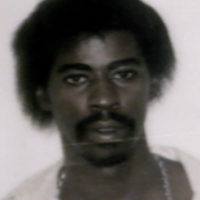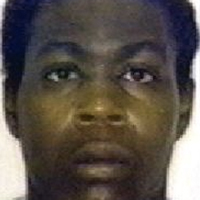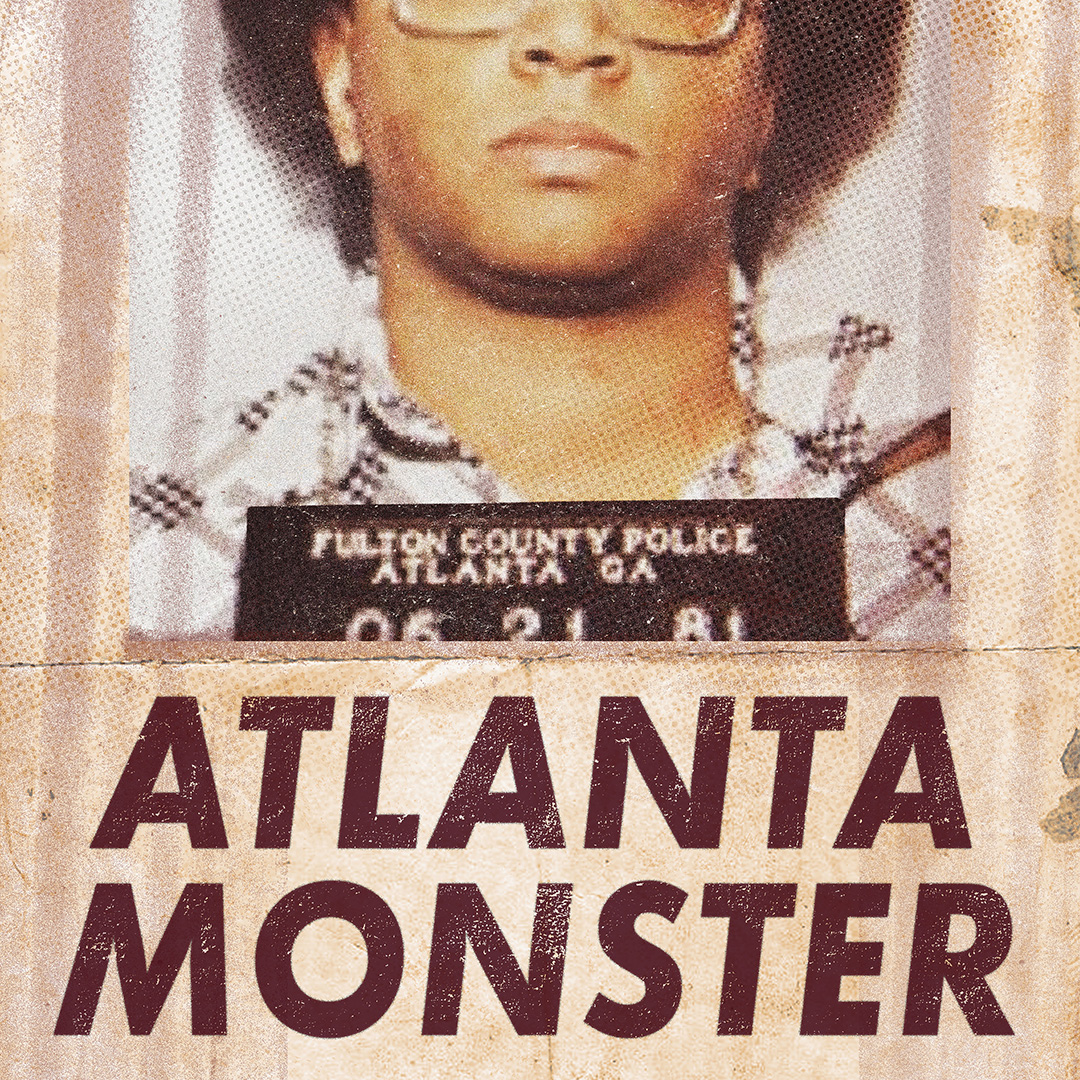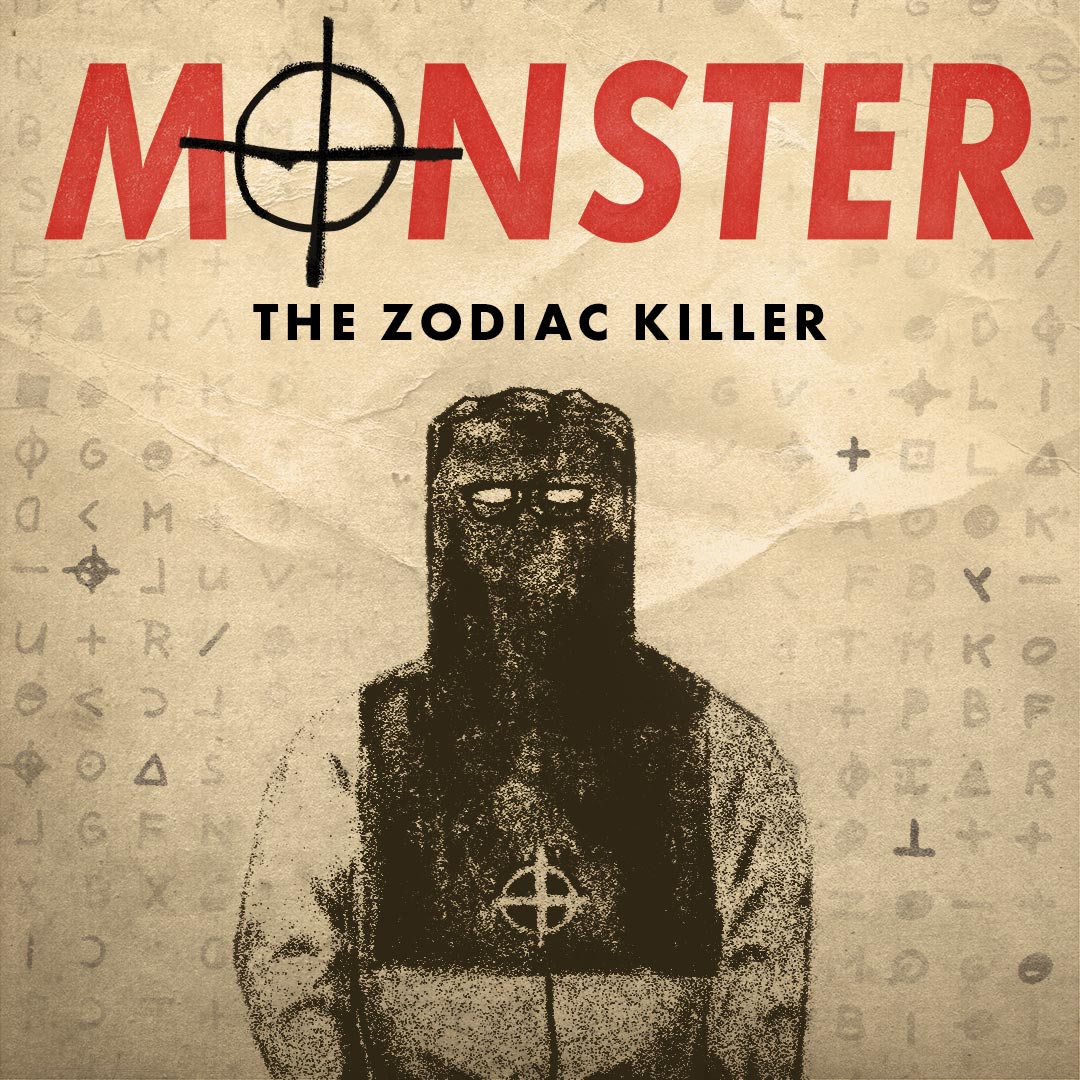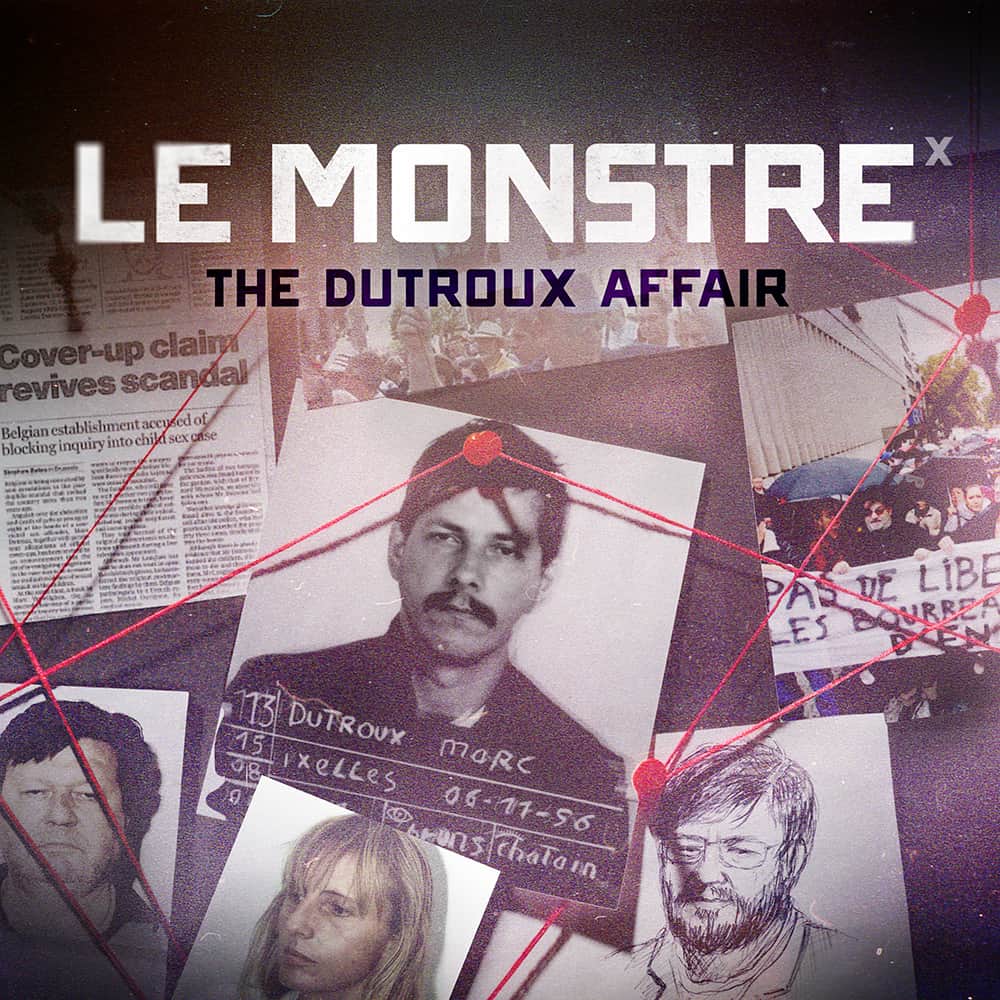Episode 9
The Trial
Trial by trace evidence.
– Dale Russell, reporter
I’ve recently been told that if I release this podcast, “bad things” are going to happen to me in the sense of a threat on my life, or my safety, or that of my family.
– Neil Strauss, Journalist/Host
I’ve recently been told that if I release this podcast, “bad things” are going to happen to me in the sense of a threat on my life, or my safety, or that of my family.
– Neil Strauss, Journalist/Host
–
Victims
Nathaniel Cater
Age 28
Last Seen 05/21/1981
Jimmy Ray Payne
Age 21
Last Seen 04/21/1981
Transcript
Payne Lindsey: You’re listening to episode nine of Atlanta Monster. There’s one episode left. Episode 10, the season finale, will come out next Friday. Today’s episode contains graphic content. Listener discretion is advised.
Payne Lindsey: After writing Sidney Dorsey a letter in prison, he finally got back to us.
Payne Lindsey: All right.
Meredith S.: Sidney Dorsey letter. Well, at least we know it wasn’t tampered with ’cause of the Georgia State Prison stamp. Interesting. This is handwritten, which is why it’s hard to read.
Payne Lindsey: Here’s what he said.
Payne Lindsey: I received your letter, and I truly apologize for my delay in responding to you. Please forgive and charge it to my head and not my heart. Accordingly, I believe that there still remains public interest in the Atlanta child murders, but I don’t think that the evidence presented during the Wayne Williams murder trial proved him guilty or innocent. Unfortunately, I had no hard evidence then, and I have no hard evidence now to prove him guilty or innocent. Truly, if I knew anything that would help close the case, I would provide it, but I don’t. Finally, if you have specific questions about the case you want answered, provide them to me, and I will do my best to answer them. Best regards, Sidney. Contrary to his Dateline interview years ago, Dorsey claimed to have no evidence to prove Wayne’s innocence, but what he did say was that he felt the evidence and trial did not prove him innocent or guilty. So, what exactly happened during the trial? What convinced a jury that Wayne Williams was a murderer?
William Northrup: I must say as kind of a preamble to what I would tell you is that I did not have a lot of time for conspiracy theories or aliens with pressure guns who were killing kids. I never really believed there was one killer.
continue reading
William Northrup: Wayne couldn’t kill anybody. Have you seen Wayne? He’s one of those pudgy little guys whose mom made him practice the piano every afternoon instead of coming out and playing ball, one of those kids. And you’re telling me he’s gonna kill a 27-year-old convict? Give me a break. If you believe that Wayne Williams killed 30 kids, I’ve got a little piece of real estate just a little west of West Pismo Beach, California, that you might be interested in.
William Northrup: Sometimes in murder cases, common sense prevails. If it walks like a duck, it’s probably a duck, and it just didn’t walk like a duck. It was a media frenzy. If we were to try the Wayne Williams case today, I can guarantee you I’d walk that sucker in a heartbeat. But hindsight’s always 20/20.
Intro: In Atlanta, another body was discovered today, the 23rd.
Intro: At police task force headquarters, there are 27 faces on the wall, 26 murdered, one missing.
Intro: We do not know the person or persons that are responsible. Therefore, we do not have the motive.
Intro: From Tenderfoot TV and HowStuffWorks in Atlanta.
Intro: Like 11 other recent victims in Atlanta, Rogers apparently was asphyxiated.
Intro: Atlanta is unlikely to catch the killer unless he keeps on killing.
Payne Lindsey: This is Atlanta Monster.
William Northrup: Apparently, I had some sort of reputation among defense investigators. In a period of three years, I had worked 23 cases and I lost one, which was Wayne Williams.
Payne Lindsey: This is William Northrup, an investigator for Wayne Williams’ defense team.
William Northrup: Mary Welcome called and Mary said, “We sure can use your help,” so I went to Atlanta. It was a zoo.
News Reporter 1: Most of the preparations for the Wayne Williams’ trial have already been completed. In just a few hours, hundreds of reporters and others interested in the case will be trying to make their way to the fourth floor to get a glimpse of the first day’s proceedings.
Payne Lindsey: In his eyes, the biggest obstacle was the sensation of the trial itself.
News Reporter 1: More than 800 prospective jurors have been summoned for the trial. The unusually large number was ordered by Judge Cooper to try to ensure that at least 12 impartial jurors can be found in this city besieged by publicity about the murder case. Already network news crews have reserved space on the street outside the courthouse, with their motorhomes loaded with electronic equipment, and media from across the country have made similar plans for coverage of the trial, which may last two months.
Dale Russell: It was the crime of the century, before O.J. It was that kind of intense interest. My name is Dale Russell. I’m the senior investigative reporter for Fox 5 News here in Atlanta. I began my career as a reporter the very same month of the first murders of the missing murdered kids, so I have covered this story my entire career.
Dale Russell: There were so many journalists that we couldn’t all get in. We were actually all put in a room off to the side.
News Reporter 1: One full side of the courtroom will be reserved for reporters. The overflow will be able to watch the trial from a special pressroom down the hall, and they’ll all be waiting a few minutes before 9: 00 tomorrow morning when, under extremely tight security, accused murderer Wayne Williams will be brought to the Fulton County Courthouse for the first day of what may prove to be the most celebrated trial in Atlanta history.
William Northrup: Our entire defense really rested on common sense. There was no place for that in that courtroom.
News Reporter 2: The state would like to introduce the evidence to show the jury a pattern of killings that claimed Wayne Williams committed.
William Northrup: Was there a murder? As it turned out, there were 5 out of 30. The others were not legal medical murders.
Payne Lindsey: As a defense investigator, one of his main points was that no one of authority could be one hundred percent sure that these murders were actually murders.
William Northrup: If you start with that premise, how are you gonna try a guy for murder?
Payne Lindsey: In his investigation, he found that most causes of death were unknown, undetermined, or in some other way, vague.
William Northrup: One of the counts that Wayne was convicted of, the original death certificate said undetermined. Then when they charged Wayne with that murder, the medical examiner went back and changed it to homicide.
News Reporter 3: It is not known yet whether Payne was strangled or suffocated.
Coroner: In the absence of injuries, there are some features of asphyxia.
News Reporter 4: Any external marks at all around the neck?
Coroner: No external marks around the neck.
Payne Lindsey: You may remember this story from episode four. The medical examiner changed the cause of death for Jimmy Ray Payne.
William Northrup: Why? Because he had a problem. It wasn’t a legal medical murder.
William Northrup: The idea that all these “murders,” quote unquote, stopped happening after Wayne was arrested is enough crap to fertilize cement.
Payne Lindsey: According to Northrop, there were way too many cooks in the kitchen and things were bound to get messy.
William Northrup: So you got this conglomeration of police from God only knows where, state, local, FBI, they were walking all over each other. There was no one person out there killing everybody. You see, here’s the problem. If you take non-legal medical murders, and you call them murders, then all of a sudden, you’ve got a massacre of 30 children. These are the murdered kids and, of course, the media did everything in their power to sell the idea that somebody was murdering the children of Atlanta. There were murders, five that I know of, but the rest, I don’t know.
News Reporter 5: Investigators the morning of May 22 wanted to know one thing. Why was Wayne Williams driving over a bridge at 3: 00 after stakeout officers heard a loud splash? According to Williams, he was out looking for the address of a singer, Sheryl Johnson, who has called him several days earlier about his talent agency.
Dale Russell: It starts off at the bridge. The bridge testimony was extremely strong.
News Reporter 5: The state today tried to show the jury that Wayne Williams frankly lied, and that after telling his alibi to investigators, he tried to cover his tracks. The defense claims there’s an explanation for everything we heard today, and that the state didn’t explore all the possibilities.
William Northrup: Wayne would have to pick up Jimmy Ray Payne or Cater and throw him over the bridge rail into the water to make that whole scenario come about. Wayne stops on the bridge. The place is covered with police. Now, maybe some of the cadets are asleep, I don’t know. It’s bushwa.
Dale Russell: I’ve been on stakeouts, and I can tell you, guys were asleep. I mean, it just happens. But we don’t know that he was asleep.
News Reporter 6: Although prosecutors had most of the pieces that night in May, it still lacked the essential part of the puzzle. Someone actually seeing Williams’ car stopped on the bridge or better yet, the suspect throwing a body from the structure. Attorney Welcome appeared confident that the evidence against her client didn’t amount to much.
Mary Welcome: The young man who saw the car said it never stopped. I think what you’d have to picture is a man driving with one hand, opening a car without stopping, and tossing 150 something pounds over a bridge.
William Northrup: We ran tests on that bridge.
News Reporter 6: That sound, the defense claims, is the key to their proof. Police recruit Bob Campbell, part of the stakeout team, says Williams’ car did not make that sound, indicating the vehicle was traveling at a slow rate of speed. So on the stand was this sound expert who conducted tests for the defense at the bridge this week.
William Northrup: The conclusion of the expert was Wayne didn’t stop, and no one saw Wayne stop.
News Reporter 6: Testimony about the clankety-clank a metal expansion joint makes when a car rolls over it. The reason he didn’t hear the car, attorneys claim, is because the recruit was fast asleep.
Payne Lindsey: Pulling from his notes and his memory, Dale recounted the bridge testimony.
Dale Russell: The bridge testimony alone was extremely powerful. You just think, oh, Wayne was stopped by the bridge or he stopped near the bridge, but when you go through that testimony point by point, it’s riveting.
Dale Russell: This is his testimony. Campbell hears a splash. He grabs his flashlight and a baton. He grabs for self-defense. He puts the flashlight on the river and sees big waves coming up on the shore. He flashes the light up to the bridge, nothing. Back down to the river, watching the waves subside. Flashes it up a second time, now think of the timing that we’re talking about here. You hear a splash, you get up, you get your flashlight, you’re looking. This is what he testified to. The lights came on and the car began to move.
News Reporter 6: While looking up at the bridge, he saw lights go on after the splash, then they moved away slowly. That testimony supported his partner’s claim that the car Williams was driving approached the bridge very slowly and without headlights.
Dale Russell: Simultaneously, I have the word simultaneously written in my trial notes, so the lights were off when the splash hit the water.
Payne Lindsey: But Williams and his defense team refuted this version of the story.
News Reporter 6: Williams bluntly stated the police version of the now famous bridge incident was wrong, a lie. He claimed he wasn’t driving slow, that he didn’t turn around in a parking lot next to the bridge, that he did not throw anything into the river.
Payne Lindsey: But according to Northrop-
William Northrup: Wrong place, wrong time. He was convenient. A cynical establishment just scooped him right up and said, “You’re our boy.”
Payne Lindsey: Now, a quick break.
William Northrup: It all came down to fibers.
News Reporter 7: These are called fiber scopes. Criminologists at the state crime lab use them to compare and match fibers, rope, or fabric, for instance, from different sources. Now workers there have matched fibers from taskforce evidence to make the first official correlation between the murders of at least two of Atlanta’s 15 murdered children.
William Northrup: To tell you the truth, it scared me. I didn’t have any experience with fibers. I was afraid of it. I was afraid of the evidence.
Investigator: We’ve come up with some physical evidence that’s common to at least two of the bodies, and it falls into the fiber category.
Skip Palenik: People in the world need to know where somebody has been, from the dust on their clothes and the soil on their shoe. The geological map will have a regional say on [inaudible 00: 15: 06]. We can point to one spot and say this is what the soil is like at that point. For example, back there is it soil for the entire Punjab, for example, in Pakistan.
Payne Lindsey: How did you all collect all this? How long did this take?
Skip Palenik: My lifetime. This is a lifetime’s work. This is sand and soil from all over the world.
Payne Lindsey: We visited Skip Palenik at his lab, Microtrace, outside of Chicago. The walls were covered with small shelves, home to hundreds of bottles holding sand, dirt, and fibers from all over the world.
Skip Palenik: These are all fibers from every manufacturer in the world, practically. I was eight years old and got my first microscope and had my own lab, so I’ve been doing it for 64 years. I’ve been looking through microscopes. Senior research microscopist, I guess, president of the company.
Payne Lindsey: Microspic?
Skip Palenik: Yeah, lawyers can’t say that, but it’s microscopist, and it comes from microscopy. Chemistry, physics, biology, those things are all fundamental. There would be no forensic science if you didn’t have those sciences.
Skip Palenik: Forensic science, one of the basics of forensic science, one of our laws that we call our own is called Locard’s Exchange Principle. Edmond Locard was a French scientist. He formulated a principle based on the analysis of dust. He promulgated this theory. Briefly it states that whenever two object come in contact, there’s always a transfer of material, always.
Skip Palenik: Let’s say, for example, all of sudden, for some reason, you make me mad and I jump on you and start attacking you. We’re never in contact again, but we were. You file charges against me for attacking you, and you saved your sweater. We get your sweater and we get my sweater. They’re both black sweaters, big deal. If you look at the fibers from your sweater and my sweater, they’re gonna turn out to be different, almost certainly.
Skip Palenik: Almost every day in my life, I look through a microscope for one reason or another. Every time I go somewhere or friends of mine go somewhere, colleagues or people I’ve had from places in other parts of the world, I ask them where they are, where they live, if they’ve gone there to visit and come back, that they vacuum their clothing for us. There’s one of those cabinets you saw in the lab is just filled with these little vacuum cassettes with dust. Those are mixtures of things for to analyze and do research on, but we have pure materials, so we have almost the known synthetic fibers from different manufacturers. We have reference material to work from. If your business is like ours is, identifying unknown substances, the ultimate goal or the ultimate proof of an identification is to compare it to authentic material.
Payne Lindsey: Skip explained the role of fiber analyst in legal cases.
Skip Palenik: The police who are there to investigate materials, they feel they’ve got enough evidence if somebody should be brought up on charges. Someone’s accused, you’ve got a defense attorney who’s hired then under the belief that his client is innocent, in fact, under our system here. The defense attorney should do everything they can to help prove his case. They’re advocates for their client. The district attorney is the state as their client. They’re an advocate for their position, the position of the police. There’s a jury in most trials. Their job is to listen objectively to the evidence. That’s why a jury is selected carefully.
Skip Palenik: In all this the forensic scientist comes. Our job is supposed to be to help get to the truth. We can certainly, in most cases, provide facts. If somebody thinks it’s not a fact, they can try and prove that wrong. We go to great lengths to make sure that something we present as a fact is that so it can’t be proven wrong, because we don’t have an ax to grind. We’re just there trying to make sure that the jury hears us and what the likely explanations are. If it’s not a likely explanation or there’s something else, then we can comment on it, we will.
Skip Palenik: I don’t think much about the human players in these cases. That probably sounds odd to people, because if you watch detective shows and things, they’re always analyzing motives and their analyzing back in the person’s past and so forth. Honestly, I would be more interested in looking at the dust vacuumed from his clothing than I would be in there talking to him or questioning him. If you were to bring me a hair and asked me to look and tell you everything I could, I would be able to tell you some things, and you might actually be amazed about what you see. The Atlanta child murders are a great example of microscopic trace evidence.
Payne Lindsey: Skip was involved in the Atlanta child murders case. One of his former students, Larry Peterson, was working on the case, and he called him up for assistance.
Skip Palenik: I remember when I got the first call from Larry, asked me if I could come down to Atlanta. He was as enthusiastic, intelligent scientist as a young man as you would want to meet. He’s also a good person. Sometimes you meet people who are talented and they’re not nice people. Larry’s just one of these easy going guys whose innate kindness could lead people to believe that he’s not as bright as he is.
Payne Lindsey: Larry Peterson was the key microscopist in the Wayne Williams case, so we met him in person.
Larry Peterson: When I graduated from college in December of ’77, started with the GBI Crime Lab in January of ’78, so in mid-’79 I had a year and a half experience. There were over 200 something investigators assigned full-time to the taskforce. Fulton County, DeKalb County, the City of Atlanta, East Point PD. You had Cobb County, Rockdale County sheriff’s department. You had a lot of agencies, all contributing people that, let’s just say, have varying degrees of cooperativeness with one another. They were collecting tips at the taskforce. They were constantly being barraged with tips and adding information about sightings and vehicles and people and all kind of things. Some of that led to searches and collectives that they would send in evidence for or that we had to do crime scenes on. I can’t tell you how many homes and cars and suspect residences and whatever during this whole thing that I literally went to, much less that investigators went to and did collectives and sent in.
Larry Peterson: It was a task force crime scene collective unit, between myself and a serologist and a latent print, and a that was the taskforce crime scene unit. So if there’s something they thought of significance, this group went there and did the processing.
Larry Peterson: Through the investigation, there were hundreds of fiber samples being sent in for a comparison. I don’t have the exact number, but there was a number of dog hairs being sent in also. They started putting together this conference, and they were gonna bring in fiber analysts from the southeast, from the state labs, and some other notable microscopists. Walter McCrone and Skip Palenik were two.
Payne Lindsey: After working multiple crime scenes in the Atlanta child murders case, Larry discovered a particular trend in the fiber evidence found on the victims. Most significantly, an oddly shaped green carpet fiber.
Larry Peterson: There’s three principle things that I was looking for. There was the green carpet, there was the violet acetate, and the dog hair. 15 victims had the green fibrous match in the green carpet. Some of them only had one. Some of them had more than one, five, six, seven green carpet fibers. One of the things I knew about the green fiber was, as the others had pointed out also, was that it was highly unique in its shape. I certainly had never seen it. So when all those, including people in the industry, indicated they had never seen a fiber like that, then that just made it more intriguing as to how distinctive or where did the fiber come from.
Larry Peterson: When this gentleman from Du Pont sketched the cross-sectional shape on this napkin at lunch, the woman who categorized these cross-sections said she thought she had remembered a fiber like that.
Payne Lindsey: It was a very rare fiber, one that all of the experts had never seen before. But they eventually identified it.
Larry Peterson: Well, this is the Wellman 181B fiber. The two very large lobes in this one short leg, lobe on top. Wellman was a small company in Johnsonville, South Carolina, and made very little fiber. That made that one fiber just by its shape highly unusual and rare, but they didn’t make carpet. They just made fiber, so they sold fibers to several companies who then tufted it into carpet.
Larry Peterson: Now we need to figure out who was making it. We had their distribution, and there were five or six companies that Wellman was selling to. FBI field agents went and collected green carpet samples from all of these companies and sent them into the laboratory.
Payne Lindsey: Just how rare was this green carpet fiber? Larry pinpointed that exactly.
Larry Peterson: There was like 680,000 square yards total of that carpet made. If you kinda looked at an average room, 12 by 15, or about 20 square yards, you roughly have 680 rooms total production of that carpet. They distributed that carpet in 10 southeastern states. They didn’t have records of how much went where or who it was sold to, but if it was an equal distribution, that’s 82 rooms of that carpet for the whole state of Georgia.
Payne Lindsey: 82 rooms.
Larry Peterson: This is not just distinctive, it’s actually very rare. Of the FBI had dug up, there was 600,000 something occupied housing units in Metro Atlanta. Even if all 82 rooms of that carpet was in the Metro Atlanta area, still it would be highly unusual to find it.
Payne Lindsey: Over the years, Larry developed a simple analogy to help people understand the rarity of this fiber.
Larry Peterson: Imagine that you’re a witness of a getaway car in a bank robbery. The getaway car is lime green Rolls Royce with a purple racing stripe. You’re, A, gonna think, wow, that is really a distinctive car. If I ever see that car again, I’m gonna recognize that car, and if you describe it to others and they have a recognition of generally what car it looked like, they will also recognize that’s a highly unusual car, and if I ever see it again, I’ll say that’s the car. The odds of another car being like that have to be astronomically low, if at all.
Larry Peterson: So this green carpet fiber was something like that, except that you couldn’t recognize it at first. It became over time a lime green Rolls Royce with a purple stripe in the guise of a fiber, that unique.
Payne Lindsey: In the trial, Wayne’s defense investigator, William Northrop, was busy doing some testing of his own.
William Northrup: I called Lee Bailey’s office. They gave me, they swore up and down he was the best fiber expert in the world, you know how that goes. He came out of Kansas, believe it or not. When I picked him up at the airport, he took me out and he said, “Listen, stop by a department store.” We went over to Lenox Square, and there was a Rich’s over there in those days. We bought two new pillowcases.
William Northrup: We went down to the river, to actually the bridge where Wayne was spotted that night. We put the pillowcases in the water and let the water flow through it. Pulled them out, there were thousands of fibers in the pillowcases. So much for fiber evidence.
Payne Lindsey: We asked Larry about this.
Larry Peterson: Here’s what really happened. He had gone down to the river with a pillowcase and allowed river water to flow through it for some period of time. I don’t know how long. Then he collected fibers from the pillowcase and was indicating that the river was full of fibers, with a notion then that there are so many fibers in the river that the logical source for where the fibers came from as opposed to the Williams’ home.
Larry Peterson: Through discovery, we were able to get the samples that Randall Bresee actually looked at, the actual fiber samples from the pillowcase he collected.
Payne Lindsey: Larry was able to test the fibers Wayne’s defense found in their pillowcase experiment. According to him-
Larry Peterson: There were not thousands of fibers. There was like 30 fibers total. None of the 30 fibers was any of the fibers remotely close to any of the connecting fibers that we had in the trial.
Payne Lindsey: Northrop claimed that fibers could not be found on a body submerged in water for days because the skin dissolves.
William Northrup: Within five days, if you’re submerged in water, your skin dissolves. You have what they call skin slippage. Now what does that tell you about your fiber evidence? No fibers were picked up anywhere. They washed away if there were.
Payne Lindsey: We asked Larry about this, too. He opened his laptop and pulled up a PowerPoint with graphic pictures of Nathaniel Cater’s body.
Larry Peterson: That’s Nathaniel Cater’s body.
Meredith S.: Oh my.
Larry Peterson: Let me put this in presentation where you can see it. Here I am collecting fibers out of his hair and they’re being placed into a Ziploc bag. The decomposition in his skin slippage, whatever, you’re right, you’re not gonna find anything on the skin or whatever of the body. Most of the fibers probably did get lost, but next to the scalp, below the hair, there was a layer of silt, like out of the river, like clay silt. So his hair was acting as a filter and silt was depositing next to the scalp under the hair. Because of this silt kind of encasing the fibers, whatever was there was gonna … So I’m actually digging through the silt next to the scalp and finding fibers and putting them in that Ziploc bag so that the dog hair and fibers that I found were collected there because of the movement of the water, the fiber would have been protected because the silt had encased them.
Payne Lindsey: Larry had collected countless fibers from the bodies of victims, but they still hadn’t made a match. But all of that was about to change. He recalled the night they sent their investigation in a whole new direction.
Larry Peterson: I was at a trial in Douglas county, and I got a call out there, “Hey, when you get done, you need to go to the FBI headquarters building. There’s something going on there.” So myself and a coworker who had helped me, he and I went down to the FBI headquarters building. We’re waiting, and there’s a lot of hush talking, and we’re not getting a lot of information. What are we doing? Then he and I see the FBI crime scene team that they had flown down on several occasions. Then we were told that there was a car to be processed down in the basement of the FBI building. We go down there, he and I, and there is a serologist from the FBI team down there as well to process the car.
Payne Lindsey: It was Wayne Williams’ car.
Larry Peterson: And I’m asking, “Where did the others go?” And they said, “Oh, there’s something about a house.” I was like, “A house?” So I actually called the head of the taskforce and said, “What’s going on? FBI folks are here and we got a car that’s being processed, but what’s this about a house?” Well, he had the address of the house, so I drove to the house.
Larry Peterson: The FBI team was already in processing the house. I knew what I was looking for. I was looking for green carpet, violet acetate, and dog hair. I go in the house and there’s wall-to-wall green carpet, and there’s a bedspread in the suspect’s bedroom, and it’s violet, but it also has green in it as well. They have a German Shepherd dog, and so I principally collected those things. I went back to the FBI building and I said, “I’m going to the lab.” I got these samples, I want to see what they look like.
Payne Lindsey: For the first time, Larry’s fiber evidence seemed to be going somewhere, but it would all come down to what the samples looked like under a microscope.
Larry Peterson: When I get to the lab, it’s like 10: 00 at night. I mount the samples up, first the green carpet and put it under the microscope, and it’s like, there it is. I threw the purple fibers under there next, and here’s the violet acetate, and it was like unbelievable. At that point, I’d been looking for them for months and months, no matches, and then here’s two matches from one source. Right then I knew it was highly significant.
Payne Lindsey: Again, Larry and Northrop differed on this.
Larry Peterson: I actually was expecting it not to match. Now I’m feeling this needs to be a deep dive search. This is not another place where I’ve gone to where there’s no green carpet and there’s nothing purple and they don’t have a dog, or they’ve got a dog, but it’s a different breed dog. There was nothing even on the surface of it that made it seem like, hey, maybe. This was a maybe.
Larry Peterson: Keep in mind that just because you find a fiber that’s not of the clothing doesn’t mean that it’s important, because you’re picking up fibers from your home, your car, a lot of places that you would normally go to, so there’s nothing gonna jump out and go, hey, I’m a fiber from a killer. These comparisons happened before Wayne Williams’ home was ever searched, before we ever had a piece of green carpet. These were individual cases examined over an almost two year period of time.
William Northrup: I liked Wayne. He was nerdish.
Dale Russell: Pretty much everybody in the media knew him at some level. He worked at the radio station I worked at right before I was hired. I knew him kind of from a distance, so when he was arrested we were all talking about it. Everybody was going, “That’s Wayne.” He’s cocky, he’s a little nerdy, very kind of unassuming, unassuming and cocky at the same time.
William Northrup: I called Dr. Brad Bayless, and I asked him if would come over and hang out and interview Wayne and let me know whether or not he was crazy.
Payne Lindsey: This is Popcorn with the FBI.
Jim Procopio: I was Bureau sex crimes instructor, and I should have seen this right away. He’s a sexual sadist. He gets arousal from the act of murdering, the act of killing. He’s the most dangerous of all sexual predators. They will plan their murders, they will carry them out meticulously, and he is a sexual sadist. He’s the most dangerous of all sexual predators.
Payne Lindsey: And Mike McComas with the FBI.
Mike McComas: I think Wayne has some mental issues, some disorders that would cause someone to be a compulsive liar. In my layman’s terms, I think he’s a sociopath. I think he exhibits all the characteristics, a compulsive liar, the inability to love or know that you’re hurting somebody, the illusions of grandeur.
Mike McComas: I was a hostage negotiator in the FBI and, of course, we had to know when we were dealing with people that had mental issues. If you don’t believe me, look up sociopath and look at what the five characteristics, the five biggies. Hair will pop up on your arm, and you’ll go, “Wow.”
Dr. Scott Lilienfeld: The term sociopath is used very loosely and there’s no one meaning of it. It has five or six different meanings in the literature. We don’t use it because it’s kind of a colloquial term.
Payne Lindsey: This is Dr. Scott Lilienfeld, an author and psychology professor at Emory University. One of his fields of study is psychopathy.
Dr. Scott Lilienfeld: Most of the classic work on psychopathy goes back to the work of a man named Hervey Cleckley, who actually was from Georgia. He wrote a classic book in 1941 that went through several editions called The Mask of Sanity. The mask of sanity he called psychopathy because he thought that they presented with kind of a convincing façade of being quite normal and quite healthy, so they often seemed healthy, actually in some cases, even healthier than us. But deep down there was something very wrong with them.
Dr. Scott Lilienfeld: Cleckley delineated 16 criteria that he thought were central to psychopathy. Psychopathic people tend to be charming on the outside. They make a good first impression to other people. They often seem poised, normal, often seem to be largely immune to anxiety and kinda neurotic quirks. They also seem to show a number of interpersonal deficits. They often are very self-centered. They often are manipulative. They also show a lot of affect of emotional deficits, they are often callous, the seem to lack empathy. They don’t seem to form very close emotional attachments to people. They don’t seem to fall in love very deeply with people.
Dr. Scott Lilienfeld: Then you see a lot of behavioral abnormalities, a lot of things that they do that’s very different from the rest of us. They tend to lie a lot. They cheat a lot. They’re often sexually promiscuous. They often see themselves as the victims. They often see their problems as everybody else’s fault but theirs. They seem to like insight into the nature and extent of their problems.
Dr. Scott Lilienfeld: My take on it, in part, is that they just have very little capacity for introspection. I’m having all of these problems. I keep getting caught. I’m doing all these things and so on. It’s got to be my upbringing or the way that people have treated me or that I’ve had too many bad breaks in life or blah, blah, blah, blah, blah, blah, blah. Rarely is it acknowledged that it’s their fault.
Dr. Scott Lilienfeld: They will often exhibit poor impulse control. They’ll often explode unpredictably. They often have a short fuse. When someone insults them or threatens them, they may explode very quickly. They may have a very short fuse.
Dr. Scott Lilienfeld: It’s a very complex picture. I think when you put all that together, it’s like what is that piece? That’s really hard to summarize it, but what Cleckley argued, again, is this mask of sanity, this wolf in sheep’s clothing. You see someone who’s superficial, who seems very healthy, well-adjusted, charismatic, poised, but then deep down there is something very wrong with them.
Payne Lindsey: Even for the defense team, it was important to decide whether or not Wayne was stable.
William Northrup: I wanted to know if Wayne was sane, which he was.
Payne Lindsey: He arranged an interview between Wayne and a specialist. According to their expert, Wayne was sane, but there was still one major problem with their case. Wayne fit the profile.
William Northrup: Wayne fit the profile that the FBI had.
Payne Lindsey: But he had a different take on that.
William Northrup: Profiling to me is an inexact science. Now people will argue with me, but I’m not gonna be dependent on profiling. He wanted to make a breakthrough. He wanted to find his place, and the closest he had was his connections to the media. Wayne would call and tell me, “We need to do this. We need to do that.” Okay, fine, Wayne, write me a check. We don’t have any money, Wayne.
Dale Russell: It was two days of testimony.
News Reporter 8: When the sun’s first light hit the county courthouse, the crowd was already here. They started gathering at 4: 00 am even though the doors didn’t open till 8: 00. Some 400 showed up hoping to watch Wayne Williams testify. When you get a crowd this size competing for about 50 courtroom seats, you’ve got trouble.
Dale Russell: So he did, we felt, a pretty good job in the first day of testimony. Kept his composure, answered the questions. They had to break him. They had to show the jury a different side of Wayne Williams. They had to let the jury see that this unassuming guy sitting in front of them had this other side to his personality. And they got it.
News Reporter 8: Wayne Williams was not the mild mannered witness we saw the last two days. He was irritable, arrogant. Assistant D.A. Jack Mallard had him right where he wanted him.
Dale Russell: He finally broke and he snapped at the prosecutor.
News Reporter 8: He called FBI agents goons, didn’t answer some of the prosecutor’s questions, and said his own defense attorney, Mary Welcome, forced him to give an interview for money.
Dale Russell: You want the real Wayne Williams, well, you got him right here. As an observer, it was electric.
News Reporter 8: Mallard: Mr. Williams, you’ve been eating up all this worldwide publicity, haven’t you? Williams: No, I haven’t. I’m tired of sitting here, you telling these folks I fit the profile. Mallard: Wasn’t these murders your center-stage? Williams: You must be a fool.
Dale Russell: I distinctly remember writing down, I’ve got it here for you, looking up at somebody, I don’t remember who, making eye contact, and looking at each other like, oh my gosh, here we go. Wayne became combative and testy, calling the prosecutor names. He was very, very combative. As an observer, as a juror, you saw a different side to Wayne Williams. They did what they set out to do.
William Northrup: Yeah, they got Wayne’s goat. Mary advised Wayne not to testify. I mean, what are you gonna do? But Wayne viewed it as, “I’m just overwhelmed anyway. I wanna tell my story.” They got his goat. They triggered him, and he exploded. He was gonna ‘splain it.
News Reporter 8: The defense may have recouped a little after Williams fought back tears later, telling the jury he was just sick and tired of jail, the murder charges, and the harassment from police and the media.
News Reporter 8: This was the star witness for the state, Larry Peterson, who for months has slumped over microscopes looking at fibers and hair taken from the two bodies. In court, he showed the jury photographs for the first time, pictures of fibers that he claims are similar. In his words, they match in every basic property.
Dale Russell: Nine weeks of testimony, the jury came back in under 10 hours, as I recall, which is a very short period of time. They had an early verdict. All in all, having watched what the jury watched, having heard everything the jury heard, having talked to the jurors afterwards, I’m not surprised by their verdict at all.
Dale Russell: I was a very young reporter when this was going on. This was burned into my brain. It was so impressionable for me as a young person. I can recall the Wellman 181B nylon trilobal fiber made by West Point-Pepperell that according to the testimony was found in only, I think it was, 82 homes. This resonated in my head in a way that a lot of other stories I’ve covered didn’t.
Dale Russell: The problem with this case is it’s complex and it’s lengthy, and there are many moving parts and many pieces of the puzzle, and no one piece blows you away. You can’t talk about the bridge and say, okay, that’s it. You can’t talk about the fibers and say, that does it for me. It was this long slow unfolding of circumstantial evidence.
News Reporter 9: When the Williams trial is finally history, it will be distinguished not only by the sheer bulk of scientific evidence presented to the jury, but also in the methods that science evidence was collected. Sophisticated new microscopes were brought in, and controversial testing techniques, like neutron activity analysis were used to compare the fibers and dog hair found on some of the child victims with those found in Williams’ home.
William Northrup: I remember the closing arguments basically where they used this deal, there have been no more murders since Wayne was arrested. It was balooney.
Larry Peterson: Defense in closing arguments placed a thimble on the stand in front of the jury and mentioned that all the evidence, that literally there’s just a thimble-full of evidence. That’s all there is. Obviously, trying to infer that because it’s so small, it has minimal significance, but I think that if you take a jury today and you tell them that this thimble is full of the black plague and you set it on the banister, I think people are gonna immediately recognize that this is not a place I wanna be in, that something that small, you think of microbes in viruses and things that are kinda common today that people fear, it’s things that are small can be very powerful.
Larry Peterson: So really the only explanation is that either you can say all of this is just made up, and so we went to a great deal during the trial to explain how the fibers had significance and why did these particular ones have significance. Government conspiracy, well, if there’s a government conspiracy, then I guess I’m part of the government conspiracy, cause I worked for the GBI and the crime lab, and as a young forensic scientist, I went to these crime scenes, did these collections, and made these comparisons.
Larry Peterson: I think it’d be extremely difficult for anybody to come in and replace all of that with some kind of contaminated evidence to make it all match the Williams’ home and environment. There’s just no way. I haven’t heard another viable explanation to how it could be other than that. But I understand it’s technical in a lot of ways and there are people who don’t wanna believe things, are just not gonna believe it.
William Northrup: It had to be a black judge, had to be. Had to be a black killer. All the racism, all of our prejudices, all of them, just came to the surface in the middle of that. It was just a shame.
Larry Peterson: Some people are just gonna believe what they wanna believe, and nothing you can say or do is gonna dissuade them or convince them that it’s something different than that. But I know what I know, and I think that if people are being reasonable and are being level-headed, and they’re not being biased about a preconceived notion of in or out, when you lay it out, you can see it.
William Northrup: Among those kids that died could have been a great poet, could have been a kid that cured cancer, could have been a Nobel Prize winner, who knows? But they never had the opportunity.
Payne Lindsey: Even though Wayne was in the hole and couldn’t talk, I didn’t want to stop gathering stories. By this point in time, I talked to so many people with all different opinions, I felt that some things were finally cleared up for me. What really happened at trial? What truly were the linchpins in Williams’ case, and how exactly trace evidence and fiber analysis stood up in a court of law. After talking to Larry, the fiber evidence seemed stronger than ever. And right when things seemed to be making sense, I got a phone call.
Automated Voice: You may start the conversation now.
Payne Lindsey: What in the world? Hello, stranger. I’m finally out the hole and everything. I’m doing great. They let me out yesterday. You know it was the craziest thing, before how the incident happened will be a separate podcast, except that you would never believe. Maybe it’s a good thing it went down because a lot of roadblocks got out of the way and a lot of roads got open, Payne. You’ll never believe.
Payne Lindsey: Next time on Atlanta Monster, I talk to Wayne Williams again, but this time I have a whole new set of questions for him.
Payne Lindsey: Next time on the season finale of Atlanta Monster.
Mike McComas : That was the only hole that was ever knocked into the fiber evidence. We have these records that clearly indicate that a ’79 LTD was not available to the family, but yet we have trunk liner fibers that match that trunk liner. That had bugged me through post-trial. It always had bugged me.
Larry Peterson: It was physical evidence, some of the strongest evidence that was presented in the trial, and I would tell you that 99.9% of your audience has never heard of it, blood stains.
Unknown man: When you say that I was looking at the car and I was looking at the person in the car, that I was looking at the sketch, I was looking at the sketch in the back of my mind, like, this same dude be on TV. I’m getting ready to go, and he said, I can give you a ride. I said, “I don’t need no ride.” I heard some car tires, so I get back up and look. He whooped the car around in the middle of the street.
Payne Lindsey: Atlanta Monster is an investigative podcast told week by week, with new episodes every Friday, a joint production between HowStuffWorks and Tenderfoot TV. Original music is by Makeup and Vanity set. Audio archives courtesy of WSB Newsfilm and Videotape Collection, Brown Media archives, University of Georgia libraries. For the latest updates, please visit atlantamonster.com or follow us on social media.
Payne Lindsey: One last thing, we set up an Atlanta Monster tip line. Anyone with information, leads, or personal accounts pertaining to the Atlanta child murders can call us and leave a message. The number is 1-833-285- 6667. Again, that’s 1-833-285-6667. Thanks for listening.
Larry Peterson: A lime green Rolls Royce with a purple stripe in the guise of a fiber, that unique, not knowing how many lime green Rolls Royces might be out there with a purple racing stripe.
Payne Lindsey: I’ve seen one.
Larry Peterson: You’ve seen one?
Payne Lindsey: Yeah, I’ve seen one.
More Episodes
Episode 8
CIA
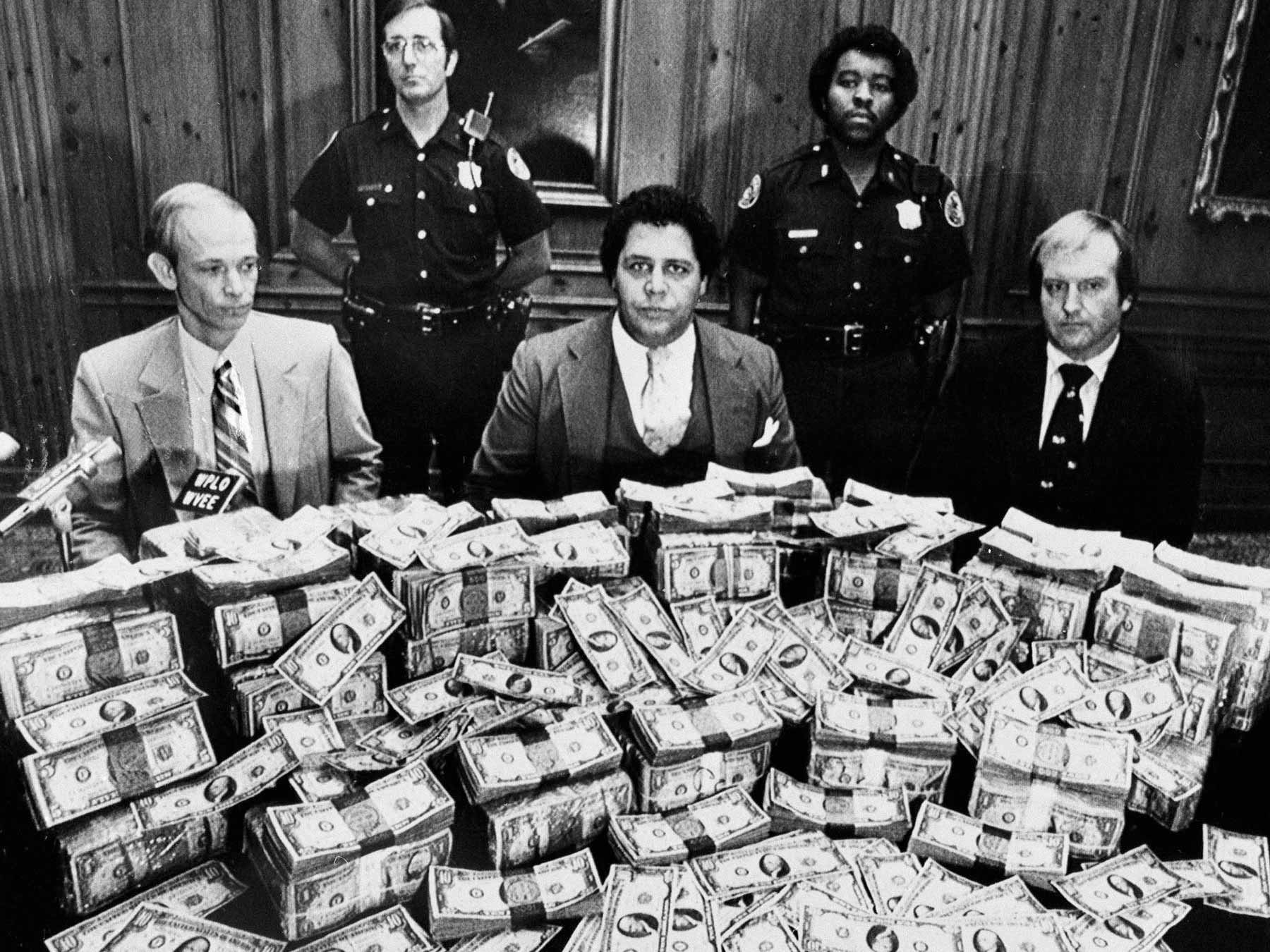
What car did Wayne really drive? Where did the reward money go? And was Wayne scouted by the CIA?
Episode 9
The Trial
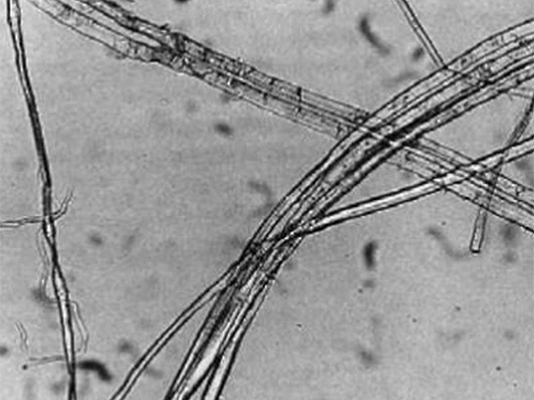
Trial by trace evidence.
Episode 10
Loose Ends
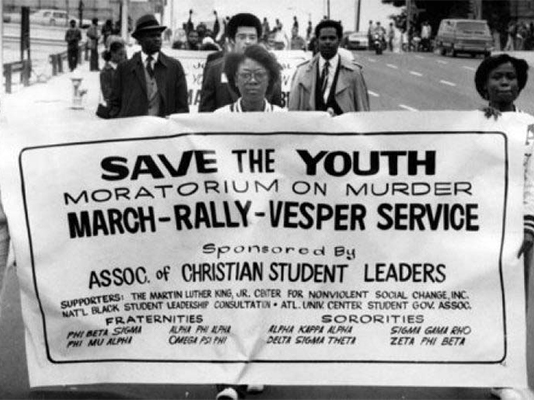
In this case, the truth depends on who you choose to believe.

